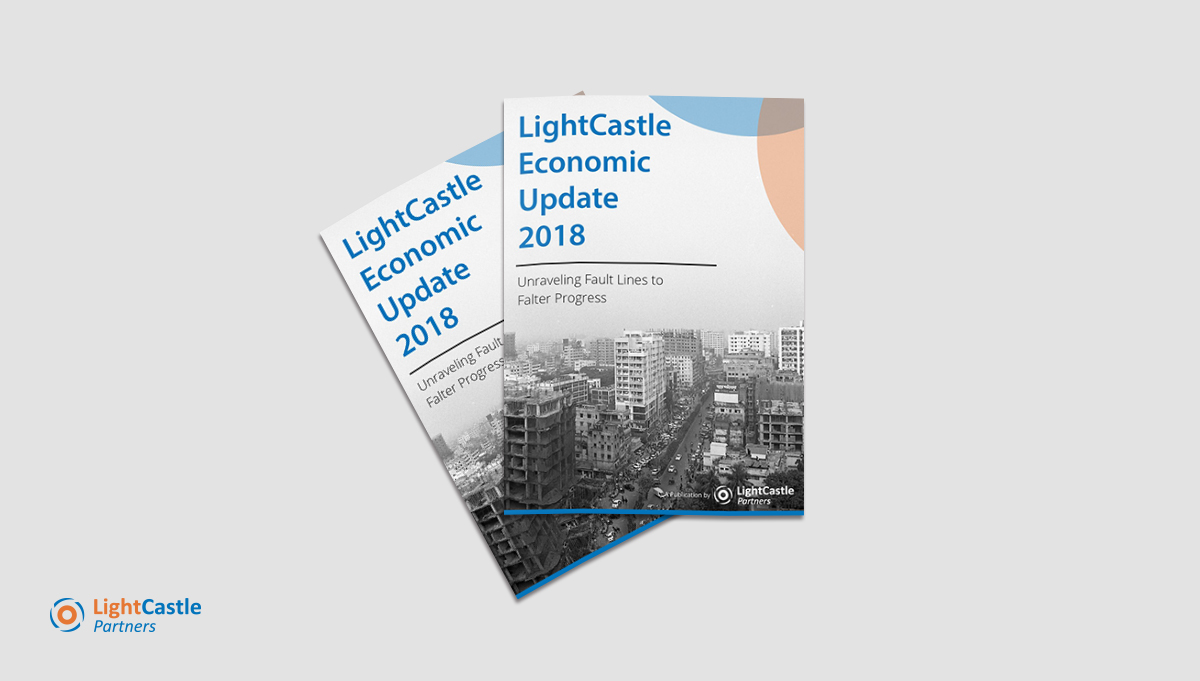GET IN TOUCH
- Please wait...

Bangladesh economy has arrived at the cusp of achieving the middle-income status with a number of indicators matching the graduation requirements. Bangladesh Economy Update 2018 from LightCastle Partners, in addition to Bangladesh Economy Update 2022 can be downloaded from here.
This has been possible due to steady macroeconomic performance led by an impressive growth trajectory. Good performance is reflected in the form of steady sovereign ratings (Moody’s, S&P and Fitch) and growing forex reserves (USD 33 billion, May 18). However, a number of fault lines have emerged that may potentially derail future growth. Bangladesh Economy Update 2018 from LightCastle Partners provides detailed analysis on these topics.
Foreign currency reserve currently stands at USD 33.11 billion (April 2018), which can cover 8 months
of the country’s import bill. Due to persistent BOP deficit and central bank’s foreign exchange
activities (selling USD to prevent BDT depreciation), the foreign currency reserve is under pressure.
The local currency has been depreciating against all major currencies, despite efforts from central
bank in reverting the slide. The exchange rate is expected to depreciate further in the coming months
due to growing demand for USD in making import payments. Cheaper BDT will directly benefit export
led sectors like RMG, but may result in higher prices for imported products, especially essential food
grains, contributing to inflationary pressure.
Due to persistent demand-supply mismatch for export processing zones, among local and
international investors, government decided on amending the EPZ Act in 1996, enabling private
conglomerates to build privately held economic zones. Although the experience of Korean EPZ, built
by the Youngone Group, has not been very pleasant, some local conglomerates are confident of
successfully operating privately owned economic zones. Recently, government has approved 37 new
Economic Zones, consisting of governmental, non-governmental and specialized economic zone. The
government is also investing in erecting Hi-Tech parks for the ICT ministry and it is predicted that
almost 33 ICT parks will be constructed all over the country.
Furthermore, government is setting up special economic zones under the supervision of Bangladesh
Economic Zone Authority (BEZA), with the view of attracting local and international investments.
Some of these zones have been promised exclusively to Chinese, Japanese and Indian investors. The
issue lies in the fact that although almost a hundred SEZs are targeted for completion, progress has
been snail-paced.
 |
To learn more about LightCastle Economic Update 2018,
|
 |
To learn more about the current status of the Bangladesh Economy
|
Our experts can help you solve your unique challenges
Stay up-to-date with our Thought Leadership and Insights